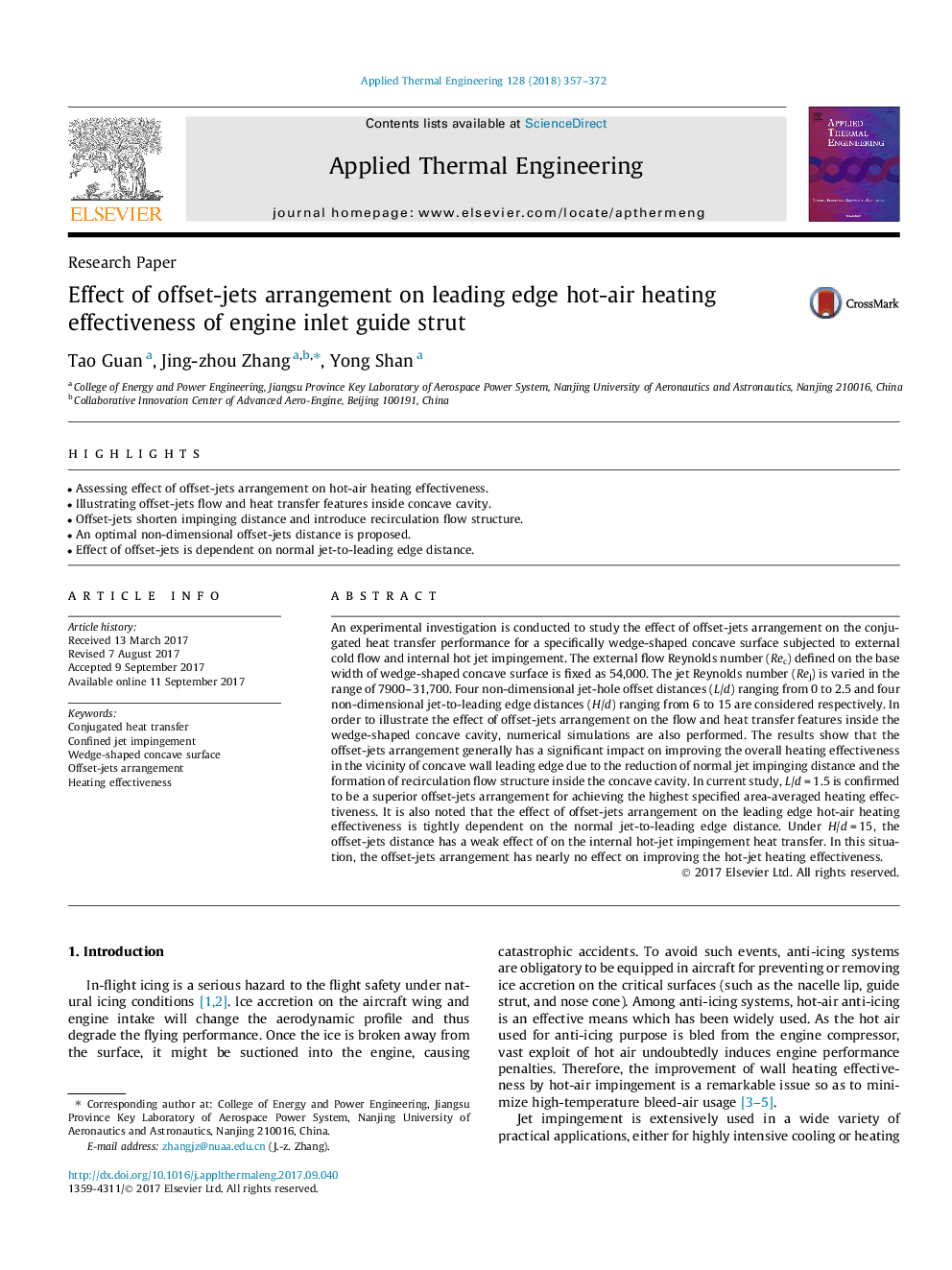| کد مقاله | کد نشریه | سال انتشار | مقاله انگلیسی | نسخه تمام متن |
|---|---|---|---|---|
| 4990826 | 1457101 | 2018 | 16 صفحه PDF | دانلود رایگان |
- Assessing effect of offset-jets arrangement on hot-air heating effectiveness.
- Illustrating offset-jets flow and heat transfer features inside concave cavity.
- Offset-jets shorten impinging distance and introduce recirculation flow structure.
- An optimal non-dimensional offset-jets distance is proposed.
- Effect of offset-jets is dependent on normal jet-to-leading edge distance.
An experimental investigation is conducted to study the effect of offset-jets arrangement on the conjugated heat transfer performance for a specifically wedge-shaped concave surface subjected to external cold flow and internal hot jet impingement. The external flow Reynolds number (Rec) defined on the base width of wedge-shaped concave surface is fixed as 54,000. The jet Reynolds number (Rej) is varied in the range of 7900-31,700. Four non-dimensional jet-hole offset distances (L/d) ranging from 0 to 2.5 and four non-dimensional jet-to-leading edge distances (H/d) ranging from 6 to 15 are considered respectively. In order to illustrate the effect of offset-jets arrangement on the flow and heat transfer features inside the wedge-shaped concave cavity, numerical simulations are also performed. The results show that the offset-jets arrangement generally has a significant impact on improving the overall heating effectiveness in the vicinity of concave wall leading edge due to the reduction of normal jet impinging distance and the formation of recirculation flow structure inside the concave cavity. In current study, L/d = 1.5 is confirmed to be a superior offset-jets arrangement for achieving the highest specified area-averaged heating effectiveness. It is also noted that the effect of offset-jets arrangement on the leading edge hot-air heating effectiveness is tightly dependent on the normal jet-to-leading edge distance. Under H/d = 15, the offset-jets distance has a weak effect of on the internal hot-jet impingement heat transfer. In this situation, the offset-jets arrangement has nearly no effect on improving the hot-jet heating effectiveness.
Journal: Applied Thermal Engineering - Volume 128, 5 January 2018, Pages 357-372
